Nevertheless, I'm pleased, finally, to have made this visit. Melaka has such a rich history - layer upon layer of culture, language and influence. Originally settled by a fugitive Sumatran prince in the late fourteenth century, in the early fifteenth century it came under the protection of Chinese eunuch Admiral Cheng Ho who opened trade with China.
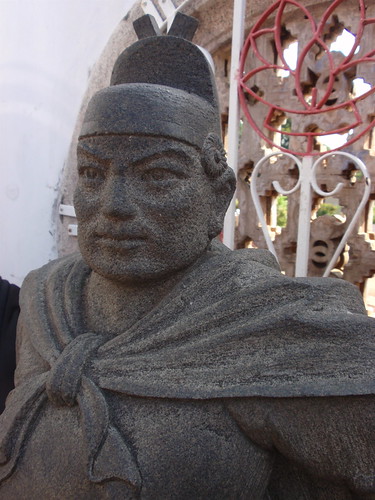
[The statue of Admiral Cheng Ho in grounds of the 1795 Chinese temple, Sam Po Kong. Of course, if you rub his tummy it brings good luck]
The Portuguese were attracted by tales of Melaka's trade and riches and invaded and ruled the area in the early sixteenth century, only to be defeated by the Dutch in 1641.

[The ruins of St Paul's Church - originally built by the Portuguese in 1521 as 'Our Lady of the Annunciation'. When the Dutch took Melaka they renamed the church St Paul's and it became a protestant church]
The Dutch occupied Melaka for the next 180 years or so, but with the decline in the fortunes of the Dutch East India Company, in 1824 Melaka was ceded to the British, though by then Melaka's importance as a trade centre had given way to Singapore and Penang and the city faded to relative obscurity.
Except for a few historic buildings,
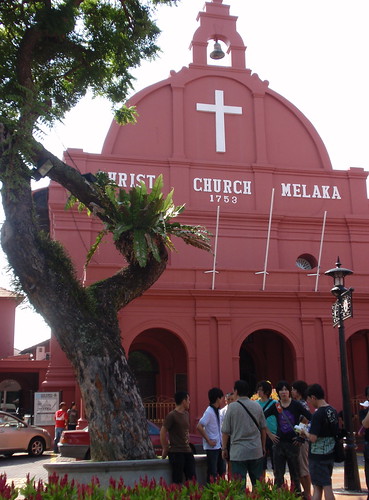
[Christ Church built by the Dutch between 1741 and 1753 fron bricks brought from Holland. The church has an elegantly austere interior and beautiful original pews that we were strictly instructed not to photograph]
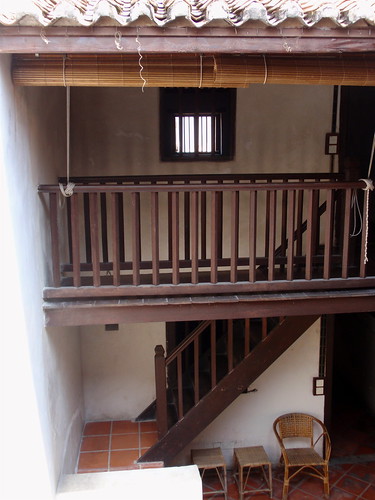
[Faithful restoration of an eighteenth century Dutch house. Many 'restorations' are much less faithful, though often more colourful]
modern day Melaka bears little direct trace of this rich cosmopolitan past - though it's still a culturally and ethnically rich melting pot. There is vibrant evidence of the city's rich Peranakan (Straits Chinese) population as well as the Baba Nyonya (mixed Chinese and Malay) traditions.
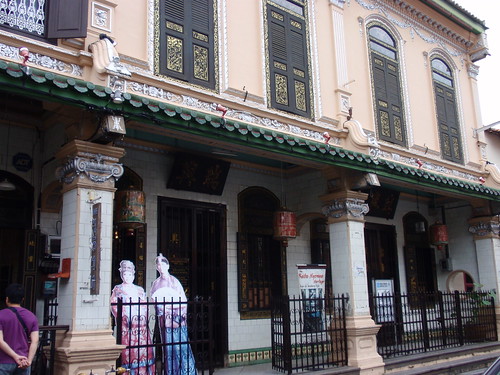
[Baba Nyonya Heritage Museum - a grand Peranakan house from 1896 with its original furniture and fittings and displays of costumes from the early twentieth century]
And of course there is the Malay majority.

[A Malay-style house in Kampung Morten - a settlement built by the riverside in the 1920s to house poorer families. Nowadays, by agreement between the state and the residents, the Kampung is preserved as a 'living museum']
As in so much of the rest of Malaysia the different groups live differently, side by side, in apparent harmony, under the rubric of 'One Malaysia'.
Melaka has become a tourist town - an easy day trip from nearby Singapore, a destination for groups from Hong Kong on short holidays, and stop-off for a few errant European travellers. And all the things that happen with tourist developments have happened - golf courses, new shopping malls, international hotels and backpacker guest houses, tarting up the historical buildings, opening pedestrian streets to stalls selling cheap trinkets and souvenirs, and having public performances of the dances and music associated with the city's history.
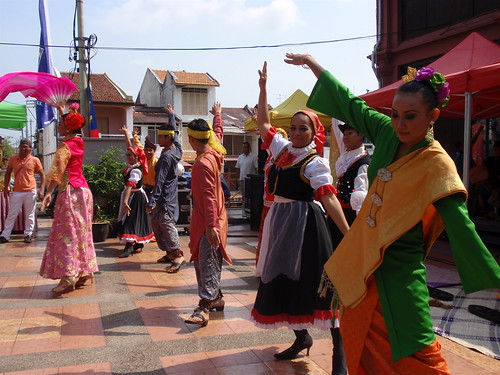
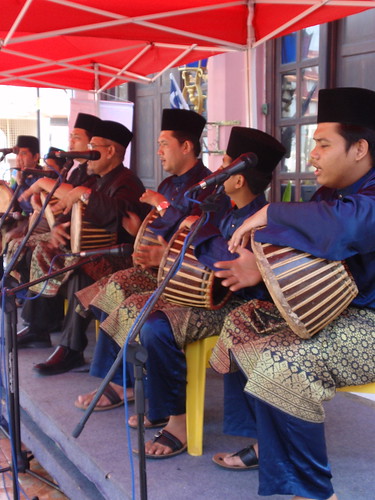
But one wonderful tourist development has been dredging the Melaka River that flows through the town, building walkways along about 9 kilometers of its edge, and having cheap small ferries regularly plying its length. When the day is hot a boat ride makes a welcome way to see something of the town.
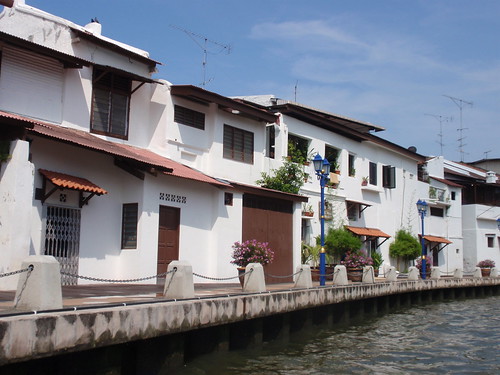
But as I wrote earlier, I'm please to have made this visit. Coming from a country where European settlement is so recent I find it a bit humbling to be reminded of the diverse and rich settlement histories of our near neighbours. Even though little remains of its past grandeur Malaka does still evoke its romantic settlement history.
3 comments:
Thank you for introducing me to Melaka.
It's great to be able to fulfill a dream and visit a place you want to see and walk the streets of it. I really love the colour of traditional costumes, they usually clash fabrics and colours together and somehow they usually manage to work beautifully.
Looking forward to your return so you can tell me more details of trip :D
its so great to see these places through your eyes. ive heard a lot about melaka, i expected grand old white verandahed colonial buildings too, so that clash between old and new is really interesting. will be glad to have you home soon too!
Post a Comment